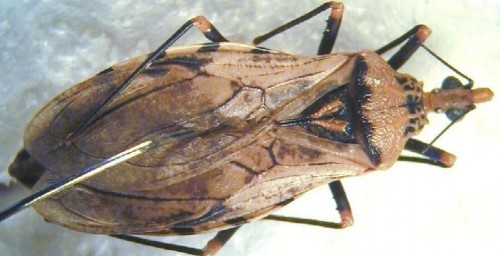Int. J. Biol. Chem. Sci. 11(6): 2630-2648, 2017
Amenan Claude Aimée DIAHA-KOUAME 1* , Tah Yves Nathan TIAN-BI 2 ,
Kouassi Patrick YAO 3 , Yaba Louise ACHI 4 , Marlène DUPRAZ 5 , Koffi KOUAKOU 1 et Jean-Pierre DUJARDIN 6
1
Laboratoire de Biologie de la Reproduction et d’Endocrinologie,
Université Félix Houphouët-Boigny, Abidjan, Côte d’Ivoire.
2
Laboratoire de Génétique, Unité de Formation et de Recherche Biosciences,
Université Félix Houphouët-Boigny, Abidjan, Côte d’Ivoire.
3
Laboratoire de Zoologie et Biologie Animale URF de Parasitologie et Ecologie Parasitaire,
Université Félix Houphouët-Boigny, Côte d’Ivoire.
4
Institut National de la Formation Professionnelle Agricole (INFPA), Ecole de Spécialisation en Elevage et de
Métiers de la Viande de Bingerville (ESEMVB), Côte d’Ivoire.
5
MIVEGEC UMR 5290 CNRS-IRD-UM, Centre IRD, 911 Avenue Agropolis,
BP 64501, 34394 Montpellier, France.
6
IRD, UMR IRD-CIRAD INTERTRYP, Campus International de Baillarguet, Montpellier, France.
ABSTRACT
Rhipicephalus (Boophilus) microplus is a tick characterized by its resistance to most acaricides currently used. Selection tools for control or eradication strategies to achieve sustainable results are still poorly accessible. In entomology, as well as in many other research fields involving arthropod studies, the study of shape variation has proven useful for species identification and population characterization. Thus, in our study,
we studied the morphological diversity of R. (B.) microplus using two methods of morphometry: classical morphometry (MC) and geometric morphometry (MG) on ticks collected in ten farms from two axes of the Ivoiro-Burkinabé transhumance corridor. The analysis of the results showed a morphological heterogeneity according to the geographical position of the populations studied on the two axes. Both methods showed
similar results but the geometric morphometry presented itself as an interesting approach because it allows to visualize the differences of form between groups or between individuals. We have thus shown to what extent these two approaches can help to understand the epidemiology, the structure and the mobility of tick populations at a lower cost and consequently, to contribute to the improvement and the sustainability of the regional control activities.
